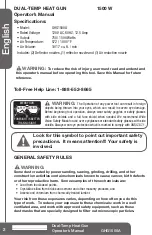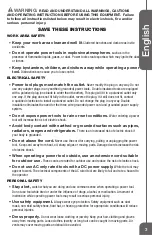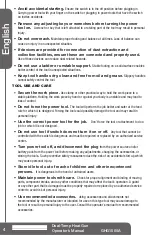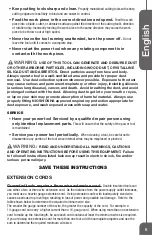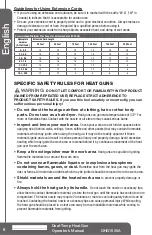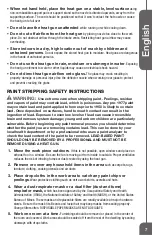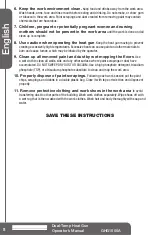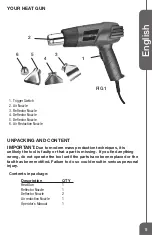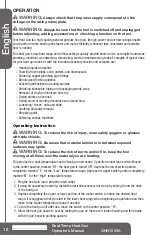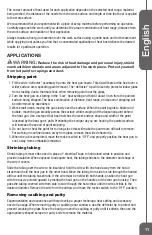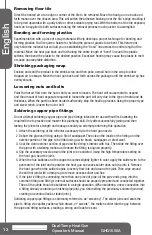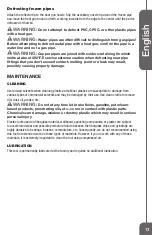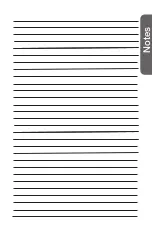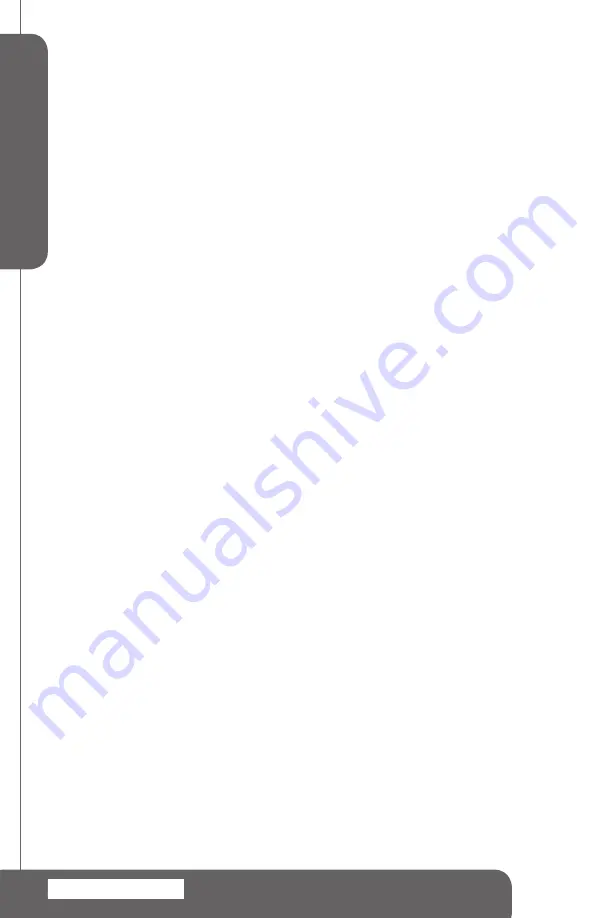
English
Dual-Temp Heat Gun
Operator’s Manual GHG1500A
12
Removing floor tile
Direct the heated air at an edge or corner of the tile to be removed. Move the heat gun in a back and
forth motion over the chosen area. This will soften the adhesive backing near the tile's edge enabling it
to be pried upwards with a putty knife or other suitable prying tool. With the bottom of the tile exposed,
heat can be applied to both surfaces making the removal process much quicker to accomplish.
Bending and forming plastics
Experimentation with a piece of scrap material will help develop a proper technique for bending and
forming plastics. You'll require a fixture for holding the piece of plastic to be bent. This fixture not
only holds the material but will aid you in establishing the “bend” line across the entire length of the
material. Move the heat gun back and forth along the entire length of “bend” line until the plastic
softens, then bend the plastic to the desired position. Excessive heating may cause the plastic to melt
or cause unacceptable distortion.
Shrinking packaging wrap
Enclose and seal the product in the shrink wrap and then poke a small hole in the wrap to allow
trapped air to escape. Move the heat gun back and forth across the package until the shrink wrap has
evenly shrunk.
Loosening nuts and bolts
Point the hot air flow onto the nut or bolt you want to loosen. The heat will cause metal to expand
and the amount of heat exposure required to loosen the part will vary due to the type of metal and its
thickness. When the part has been heated sufficiently, stop the heating process. Using the proper type
and size wrench, loosen the nut or bolt.
Soldering copper pipe fittings
Do not attempt soldering copper pipe and pipe fittings intended for use without first investing the
required time to practice and master this plumbing skill. Only after successfully joining and then
testing the joints for strength and leakage should you attempt performing this operation.
1. Attach the soldering or the reflector accessory tip to the heat gun nozzle.
2. Deburr the pipe and fitting using a file of sandpaper. Then clean the inside of the fitting and the
exterior portion of the pipe to be fitted using a wire brush, sandpaper, or steel wool.
3. Coat the clean exterior portion of pipe and the fitting's interior with flux. Then slide the fitting over
the pipe with a twisting motion and ensure the fitting is aligned properly.
4. Slip the accessory nozzle around the joint to be soldered. Using the high temperature setting on
the heat gun, heat the joint.
5. When the flux bubbles and the copper becomes slightly lighter in color, apply the solder wire to the
perimeter of the joint and reposition the heat gun so excess solder does not drip into it. Remove
the heat gun when the solder begins to evenly flow into and around the joint. Then wipe around
the still hot joint with a damp rag to remove excess solder and flux.
6. If the joint's fitting is connecting more than one piece of pipe, all the pipe ends going into the
common fitting and fitting's internal surfaces should be properly prepared and connected together.
Then all the joints should be soldered in a single operation. (When soldering a new connection into
a fitting already containing a finished pipe joint, you risk melting the previously soldered joint and
creating an eventual leak or failed joint.
)
Soldering copper pipe fittings is commonly referred to as “sweating”. The solder joins and seals the
pipe to fitting via capillary action which draws, or “sweats”, the molten solder into the gap between
the pipe and fitting surfaces, creating a strong and leak free seal.


